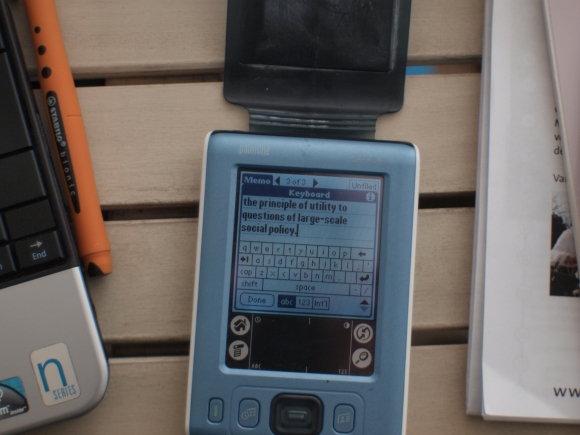Mijn fiets is gefuckt. To cut a long story short, the chain is as brittle as a Java applet running on low memory.
Last Wednesday, I was setting off from the terrace outside Radio Nederland Wereldomroep—where I’m currently a intern—when suddenly my leg shot forwards and my chain had come off my chainset. Actually, a little more had happened because when I looked behind at my derailleur, what seems like three hundred metres of chain was strewn across the footway. I’d snapped my chain, and not cleanly; it really snapped hard off. Since quite a few people cycle in the Netherlands (so I’ve heard), sourcing a chain tool at work wasn’t exactly difficult and I knew what to do. An annoyance but no reason to cry and ur…not cycle to the nearest bike shop. I went out to the cycle parking (lovely weather for bike maintanence) and got to work removing and refitting links. After about forty minutes of swearing copiously and getting seriously oily hands, the job was done and I was able to cycle home without problem.
This morning, I was cycling (again) quite happily on the three metre-wide unidirectional cycleway adjacent to the N417 just outside the village of Hollandsche Rading and again: crunk fipp clatter clatter clatter clatter. I stopped, looking behind and again: three hundred metres of chain. Since I was reasonably close to a railway station, I decided to park my bike and hop on a train to work.
Jonathan Bennett offered me the advice “clean and lube”. On closer inspection, yeah: it does need a clean. While I cleaned the shit off my Hurricane on Bank Holiday Monday, I neglected to clean the chain and other ‘transmission’ parts and naïvely thought “chain could do with a lube” before globbing the usual quarter-of-a-bottle onto the chain. In hindsight, this was a bad descicion.
The forest which surrounds the wonderful B&B where I’m staying is bone-dry (though we did get roughly an hour of rain yesterday evening) but still: really bloody dry and, as a precaution, a ‘code red‘ has been instigated banning smoking, barbecues and basically anything which could start a forest fire from “woodland and near woodland”. The route I’ve been commuting to Wereldomroep along for the past three weeks takes a dirt-surfaced fietspad (lit. “cycle path) for the first four-or-so kilometres. Not exactly the best surface for chains; this is perhaps why my chain snapped …three times, though I can’t find any real citations on t’Internet linking lack of cleaning to chain snappage.



